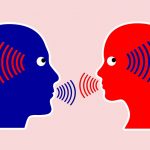 Active listening is a method of listening and replying that improves understanding. It can be one of the first steps we take to reduce tension in a situation and where we can begin to find solutions to problems. Active listening is when we do not only hear the words someone is saying, but we process the entire message they are trying to communicate. To do this we must give our undivided attention.
Active listening is a method of listening and replying that improves understanding. It can be one of the first steps we take to reduce tension in a situation and where we can begin to find solutions to problems. Active listening is when we do not only hear the words someone is saying, but we process the entire message they are trying to communicate. To do this we must give our undivided attention.
When being an active listener, do not become distracted by other things going on around you, give full attention to the speaker, and do not think of replies while they are speaking.
As a listener, we should remain neutral, not taking sides or making our opinions while the person has started speaking. Active listening means having patience and not interjecting every time there is a short pause. Silences and pauses should be accepted in the conversation. We must give the other person enough time to properly explore their thoughts and how they feel.
There are signs of being an active listener that are either verbal or non-verbal. Non-verbal signs of active listening include:
Eye contact. Make sure you are giving the speaker eye contact to indicate that they have your full attention.
Smiling is an important non-verbal sign of being an active listener. A little smile during the conversation can go a long way. It shows that you have been paying attention and are happy about what is being conveyed. Combine this with a head nod and it’s a great way to show that you are listening to and understanding the speaker.
Posture is also important. As an active listener, leaning into the speaker can show that you are being more attentive. Bad posture would be folding your arms or turning away while the person is speaking.
Being distracted is another example of bad non-verbal active listening. Imagine speaking with someone who is constantly looking at their watch, how would that make you feel? Doing something else while the person is speaking, such as playing with your phone, is also another negative non-verbal communication.
Mirroring can be a positive or negative non-verbal communication. A positive form of mirroring is when you automatically mirror facial expressions of the person speaking. This can be seen as being attentive to what is being said. On the contrary, manually forcing to mimic facial expressions can be a sign of being inattentive.
Stay tuned for part 2 on Active listening in our blog post for next month where we go over verbal signs of being an active listener.
If you have any other questions about active listening contact us to schedule a session and we can have a deeper conversation on what it means to be an active listener.

